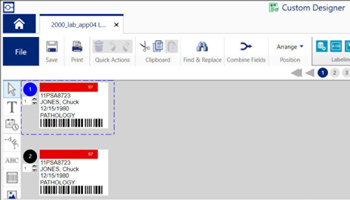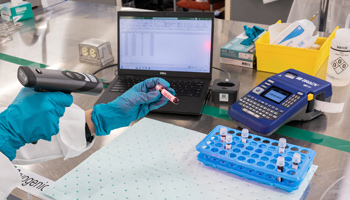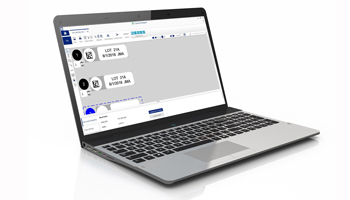Labels for Safety, Visuals and Facility ID Desktop Printers
Labels for Product, Wire and Lab ID Benchtop Printers
Labels for Safety, Visuals and Facility ID Desktop Printers
Labels for Product, Wire and Lab ID Benchtop Printers
Safety and Facility ID Desktop Printers
Product, Wire & Lab ID Desktop Printers
Pipe Marker Accessories & Mounting Brackets
Valve Lockouts & Hose Lockouts
Group Lock Boxes & Permit Control
PaintStripe Floor Marking Stencils
Maintenance and Production Tags
Calculators and Assessment Tools
Product Finders and Data Sheets

Brady Workstation Laboratory Identification Software Suite (LISS) is a comprehensive lab software solution designed to enhance efficiency and accuracy. With the option to create customized labels for specific needs, it helps labs stand up to common labeling challenges such as identification errors, mislabeling or inconsistent practices
LISS provides a range of features so labs can streamline labeling processes, improve specimen traceability and ensure compliance with regulatory standards. Here are five essential features to utilize that can help get your lab running more efficiently.
Create tailored labels for efficient identification of specimens and samples, ensuring that patient data and other relevant details are clearly and consistently presented.
Automated label sequencing provides significant benefits in improving efficiency and accuracy. A good sequence feature offers various capabilities that enhance the labeling process.

LISS makes it easy to integrate lab data with its Excel Import functionality. Easily import Excel data right onto your labels, streamlining label creation and eliminating the need for manual data entry.
In addition to importing data from Excel spreadsheets, labs often need to import data from various other sources, such as laboratory information systems (LIS), databases and text files. Advanced import features allow labs to import data from a wider range of sources.

Create templates with locked or editable elements for consistent label creation. This ensures accurate and efficient identification without all the errors.
These five essential features collectively empower laboratories to optimize labeling processes, enhance specimen traceability and maintain regulatory compliance, ultimately leading to improved efficiency and accuracy in laboratory operations. Our Brady Workstation Laboratory Identification Software Suite offers a comprehensive suite of features — including the five mentioned in this article — designed to enhance efficiency and prevent costly mistakes in the lab. By integrating advanced lab software with reliable lab label printers, laboratories can further streamline their workflows and ensure consistent, error-free labeling.

Get your lab running more efficiently by eliminating costly identification errors. This comprehensive group of apps makes it easy to create custom labels that fit the specific needs of your lab.
Increase Lab Efficiency
These label printers eliminate tedious, labor-intensive tasks like handwritten, hand-applied labels and replace them with something faster and more accurate: printed labels with imported patient data
Upgrade to Faster Labeling
Lab labels are ideal identification solutions for the life science industry. Laboratory labels resist smearing, fading or falling off even in liquid nitrogen, freezers, autoclaves, hot water baths, chemicals and solvents
Durable Labels for Any Lab
While labs can’t automate biological processes, they can automate labeling, sample handling and movement, liquid handling and sample analysis-- and that’s a time savings like no other.
Learn to Optimize Your Lab Workflow
When considering information in the lab, almost everything involves identification. From patient data to expiration dates on chemicals, we rely on labels.
Choose the Right Lab Labels
Precise and accurate lab sample management is not a nice-to-have in scientific research and analysis – it’s a must-have. With a few lab sample management best practices and the right labels and tools, labs can protect themselves from potential pitfalls.
Tips for Lab Sample Management